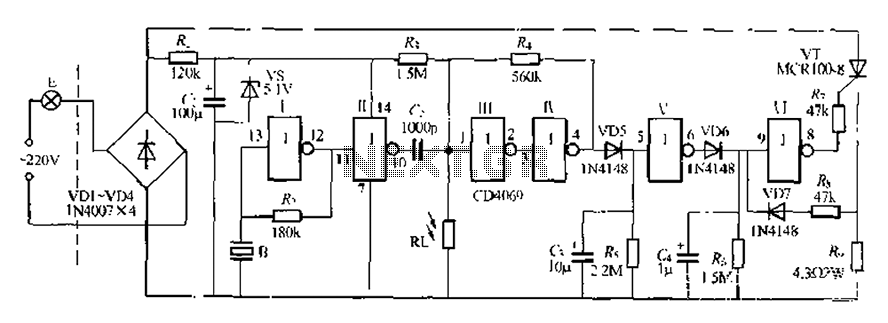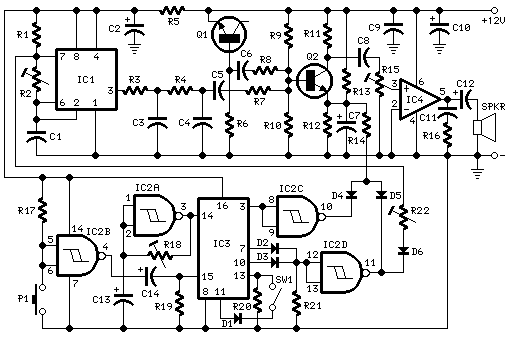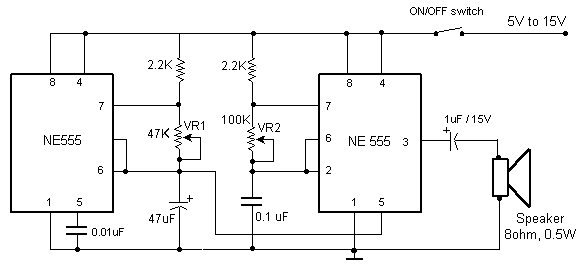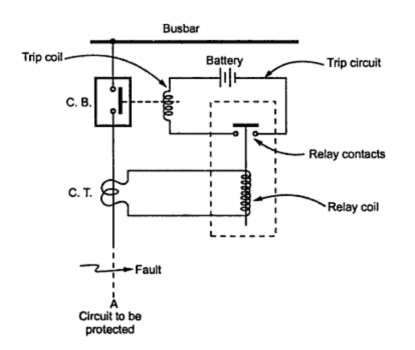
Sound activated strobe trip
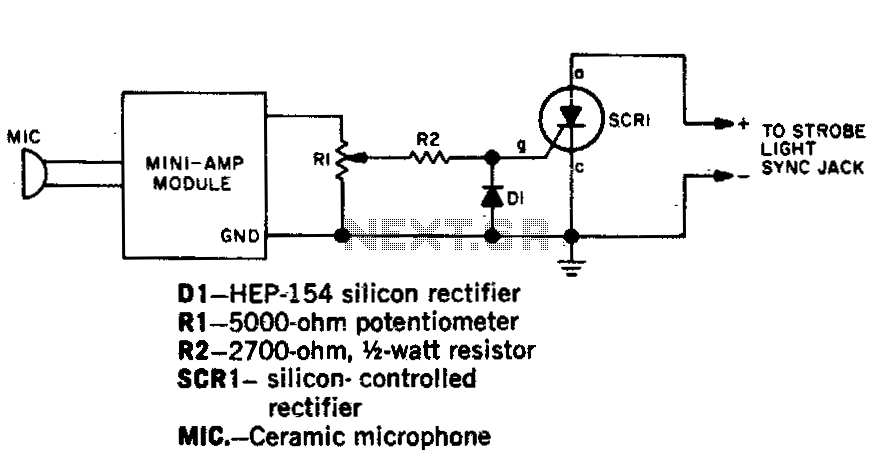
Capture strobe-flash images at the precise moment a pin punctures a balloon, a hammer shatters a lamp bulb, or a bullet exits a firearm. Utilize a transistor amplifier rated at 1 watt or less, which must include an output transformer. The amplifier should be terminated with a resistor at its maximum output impedance, ideally 16 ohms. To conduct a test, dim the room lights, open the camera shutter, and break a lamp bulb with a hammer. The impact sound from the hammer will activate the flash, resulting in a photograph taken at that exact moment.
The circuit described involves a strobe flash photography system that is designed to capture high-speed events with precision timing. The key component of this system is a transistor amplifier, which is critical for driving the flash unit. The amplifier should not exceed a power rating of 1 watt to ensure safety and compatibility with the flash circuitry.
The output transformer is essential for impedance matching between the amplifier and the flash unit. Proper termination of the amplifier with a resistor at its highest output impedance, ideally 16 ohms, is necessary to maximize power transfer and minimize distortion. This setup allows the amplifier to effectively drive the flash unit without overloading it.
For testing the system, it is important to ensure that the environment is controlled. By darkening the room and opening the camera shutter, the photographer can create an optimal condition for capturing the flash. The mechanical action of breaking the lamp bulb generates a sound wave that can be detected by a microphone or a sound sensor integrated into the circuit. This sound serves as a trigger to activate the flash, ensuring that the photograph is taken at the precise moment of the event.
The circuit may also incorporate additional features such as a delay mechanism or adjustable sensitivity for the sound trigger, allowing for further customization based on the specific requirements of the photographic event being captured. Overall, this strobe flash system provides a reliable method for freezing high-speed actions in a single frame, making it a valuable tool for photographers and researchers alike.Take strobe-flash pictures the instant a pin pricks a balloon, a hammer breaks a lamp bulb or a bullet leaves a gun. Use a transistor amplifier of 1-watt rating or less. (It must have an output transformer) The amplifier is terminated with a resistor on its highest output impedance, preferably 16 ohms
To test, darken room lights, open camera shutter, and break a lamp bulb with a hammer. The sound of the hammer striking the lamp will trigger the flash, and the picture will have been taken at that instant.
The circuit described involves a strobe flash photography system that is designed to capture high-speed events with precision timing. The key component of this system is a transistor amplifier, which is critical for driving the flash unit. The amplifier should not exceed a power rating of 1 watt to ensure safety and compatibility with the flash circuitry.
The output transformer is essential for impedance matching between the amplifier and the flash unit. Proper termination of the amplifier with a resistor at its highest output impedance, ideally 16 ohms, is necessary to maximize power transfer and minimize distortion. This setup allows the amplifier to effectively drive the flash unit without overloading it.
For testing the system, it is important to ensure that the environment is controlled. By darkening the room and opening the camera shutter, the photographer can create an optimal condition for capturing the flash. The mechanical action of breaking the lamp bulb generates a sound wave that can be detected by a microphone or a sound sensor integrated into the circuit. This sound serves as a trigger to activate the flash, ensuring that the photograph is taken at the precise moment of the event.
The circuit may also incorporate additional features such as a delay mechanism or adjustable sensitivity for the sound trigger, allowing for further customization based on the specific requirements of the photographic event being captured. Overall, this strobe flash system provides a reliable method for freezing high-speed actions in a single frame, making it a valuable tool for photographers and researchers alike.Take strobe-flash pictures the instant a pin pricks a balloon, a hammer breaks a lamp bulb or a bullet leaves a gun. Use a transistor amplifier of 1-watt rating or less. (It must have an output transformer) The amplifier is terminated with a resistor on its highest output impedance, preferably 16 ohms
To test, darken room lights, open camera shutter, and break a lamp bulb with a hammer. The sound of the hammer striking the lamp will trigger the flash, and the picture will have been taken at that instant.

